The Basque Country is an autonomous community in the north of Spain and has a very rich history, a strong culture and a charm that you scarcely find anywhere else. This vast historical-cultural region that stretches across northern Spain and southwestern France has survived invasions, has its own language and is known worldwide for its superb cuisine. There is much to discover in its main cities, Bilbao, San Sebastian and Vitoria-Gastéiz, as well as in the other, lesser-known towns. Learn some curious facts about the Basque Country and immerse yourself in the history and present of this fantastic destination!
Origins

Did you know that the Basque people are one of the oldest ethnic groups in Europe? History says that this people inhabited the southwestern corner of Europe before the Indo-European peoples came to this area, about 5,000 years ago. However, the origins of this region are also a matter of debate – it is a controversial topic that has already given rise to much research, studies and discussion. There are several hypotheses and theories, the most prevalent being that of native origin, meaning that the Basque language developed over thousands of years between northern Spain and southern France. One thing is certain: the origins of the Basque language and its culture are quite different from the rest of Spain. However, the region has been influenced by various peoples such as the Romans, Celts, Visigoths, Castilians and many others.
Language
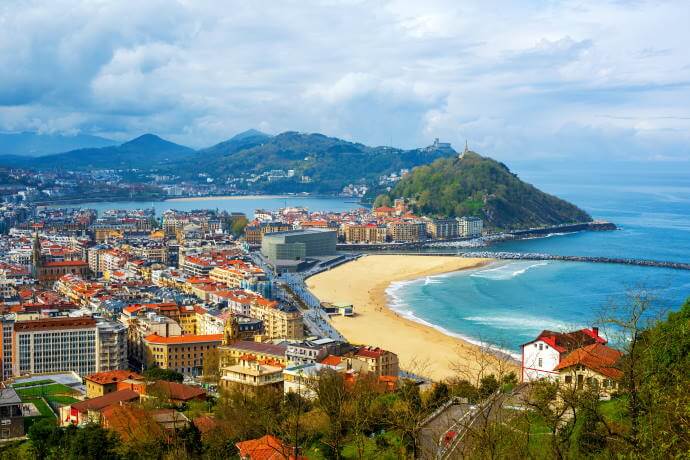
The Basque language, "Euskara", is different from French, Spanish and any other language, which makes it unique. Linguistically, it is not related to any other language, but its origins, like the origin of the people, are still disputed. The name derives from the fact that the Basque ethnic group emerged from a region in southwestern France and northwestern Spain known to Basques as Euskal Herria. There are at least six Basque dialects spoken in different areas of the region, although most locals speak a standardized version. The language is also spoken in certain parts of France. As the Basque people are one of the oldest ethnic groups in Europe, their language is also one of the oldest living languages. It is also said to be a complex and difficult language to learn! There is even a myth, part of regional folklore, that even the devil tried to learn the language to decide who would go to hell, but that he gave up after seven years. Although in the Basque Country some people speak Spanish, there are areas where the locals still speak Euskara and fight to keep this heritage alive. But did you know that this language could not always be spoken? During the dictatorship, Euskara was banned and Spanish became the standard language.
Flag
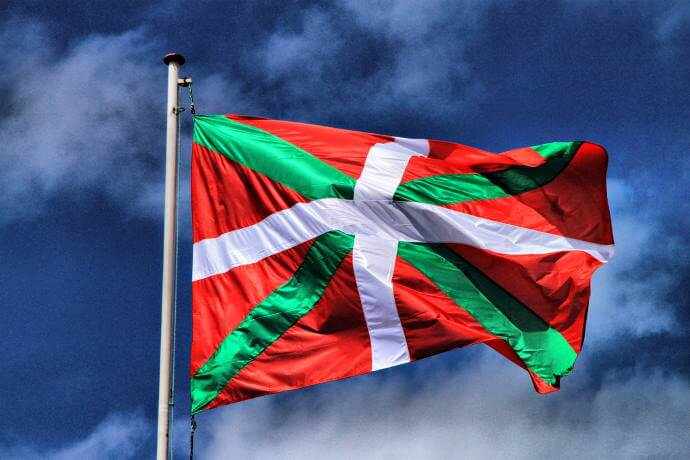
The ikurrina or ikurriña (the meaning of this word is flag, but actually it is used only for the Basque flag) is the official flag of the Basque Country and also a Basque symbol. It consists of a white vertical cross over a green diagonal cross on a red background. The flag was originally used by a political party, but was later declared the official Basque flag by law. According to the interpretations that exist about the flag (although there is no definitive answer), the red color represents Bizkaia or Euskadi and their people, the green cross can represent both the independence of the Basque Country and the famous Guernica tree, the symbol of Basque freedom, and the white cross represents God. Some say that the flag is like this because it was inspired by the Union Jack, the national flag of the United Kingdom, since Britain was the first economic power in the world at that time. Some also say that this is because Bizkaia had a long history of trade with Britain. Nowadays, this flag is often displayed at events.
Culture and traditions
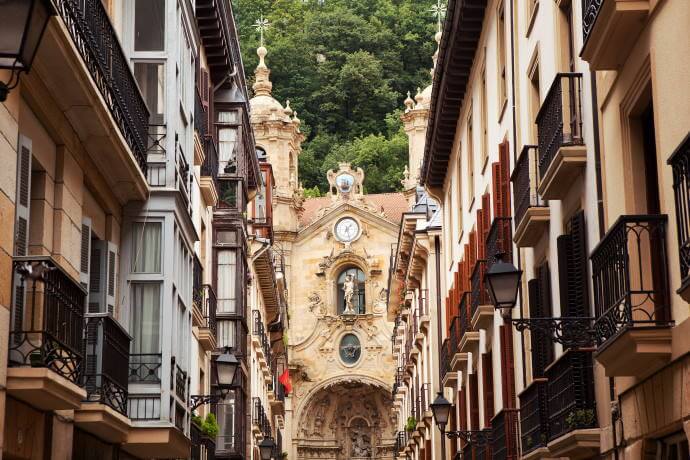
Unique dances and sports, festivals and lots of art. The Basque people are not far behind when it comes to culture and traditions. In fact, they are very connected to traditions and folklore. The Tamborada, for example, is one of the traditional events that takes place in San Sebastian on January 20. It is a drum parade with different bands that parade through the streets dressed up, playing drums and barrels. The Napoleonic troops took Spain in the 19th century and paraded through the streets of San Sebastian with drums to remind the locals of their presence. However, the locals and merchants responded with a tone of mockery and resistance by beating on the barrels they used to fetch water. That being said, there are two groups in the parade: the soldiers and the locals, all dressed accordingly. Today, on the city's patron day, thousands of people gather in the Plaza de la Constitución in the historic center to watch the mayor raise the flag and listen to the drums. For 24 hours, you can always hear a tambourine playing the traditional marches somewhere in the city. Besides this commemorative day, there are other festivals typical of the Basque Country, such as Semana Grande (Big Week), also called Aste Nagusia, which takes place every year in August. At this festival, people listen to folk music, dance and do rural sports. Did you know that the Basques have their own national sport? It is called Pelote or Pelota and it is a very fast game, a kind of cross between handball and squash. While talking about culture and folklore, one must also mention the famous Basque dances. There are different styles, types and interpretations of these dances - in different areas of the region, the music, steps and customs change. Nevertheless, they are traditional dances, typical of the Basque Country, which have one thing in common: they always represent a social event of interest. And, of course, we must also recognize the art scene - the Basques are probably best known internationally for the Guggenheim Museum in Bilbao and for the Guernica painting. However, when it comes to art, these are just a few of the many examples. Besides de modern architecture you can admire by strolling through some of the streets in this region, there are also other important cultural elements, such as the ARTIUM Museum in Vitoria-Gastéiz, and famous artists like Eduardo Chillida, known for his large-scale sculptures. When it comes to literature, Bernardo Atxaga, pseudonym of Joseba Irazu Garmendia, is probably one of the most famous Basque writers, as his work has been translated into other languages other than Euskara, achieving global recognition.
Historic events and art
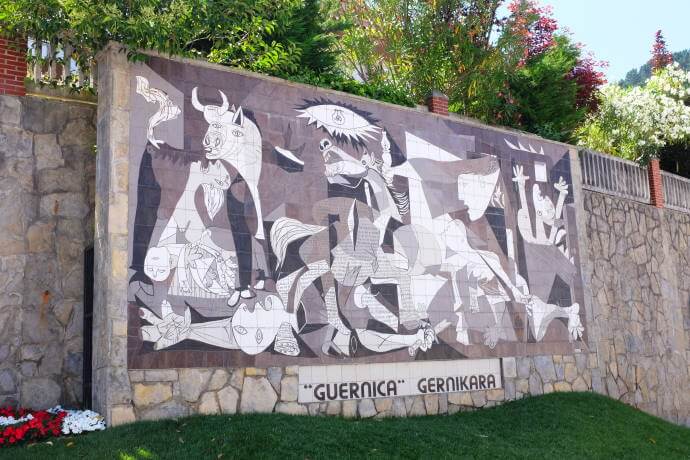
There are historical events involving the Basque Country that have influenced art in a worldwide matter, particularly a well-known artwork by Pablo Picasso – the Guernica painting. In 1937, this Basque city was bombed during the Spanish Civil War by the air forces of Germany and Italy, and the attack inspired what is considered to be one of Picasso's best works. Much of the city was completely destroyed during the bombing, although the Assembly of Biscay and the Tree of Guernica survived. Picasso's anti-war work is meant to illustrate the horror of the attack, which also inspired other artistic works such as sculptures and musical compositions. After the dictatorship, however, the Basque Country regained its autonomy and was given its own parliament. It thus became an autonomous region. When it comes to historic events, besides the bombing of Guernica, the fact that the Basque Country was constantly invaded throughout the years also marked the past of the region. These invasions were carried out by many people, such as the Romans, Arabs, French, Spanish and the Visigoth. And did you know that the Spanish part of the Basque Country is the most populated part of the region? This side agreed to be a part of Spain around the 16th century. The Basque conflict, which ended in 2011, was, nevertheless, the most important historic event.
Food and drinks
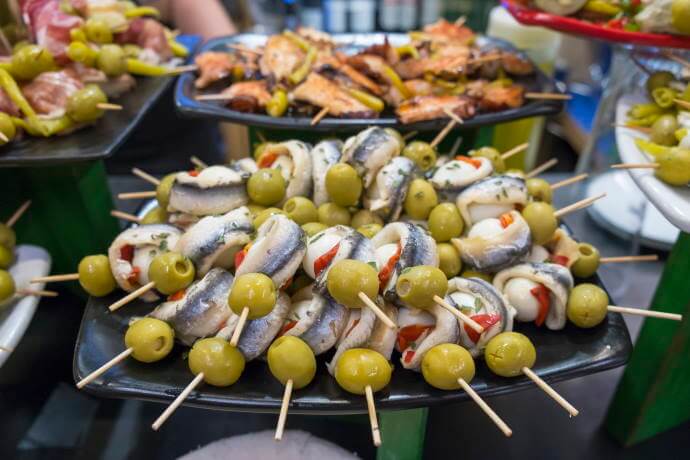
It is safe to say that the cuisine of the Basque Country is one of the best in the world. The traditional gastronomy of the region is mainly based on seafood and fresh fish, especially in the coastal areas. Further inland, the cuisine is also dominated by fresh and cured meats, vegetables and freshwater fish. However, the local gastronomy is heavily influenced by pintxos, which are basically haute cuisine in miniature - sort of like tapas, only smaller. If you visit the Basque Country, be sure to go from bar to bar sampling the different types of pintxos. San Sebastian, one of the region's most popular cities, known for its excellent restaurants (many with a Michelin star), is probably the best place to have this experience. To accompany the pintxos, there is nothing like tasting the famous dry white wine, Txakoli. It is a fruity, light, slightly sparkling and fresh wine with high acidity and low alcohol, typical of the region. Since there are many wineries in this region, you can also get to know the brands, learn about the winemaking process and do tastings in a visit. It would take pages to describe all that Basque gastronomy has to offer and all its unique specialties, but undoubtedly pintxos and txakoli wine are the most noticeable and popular elements.



